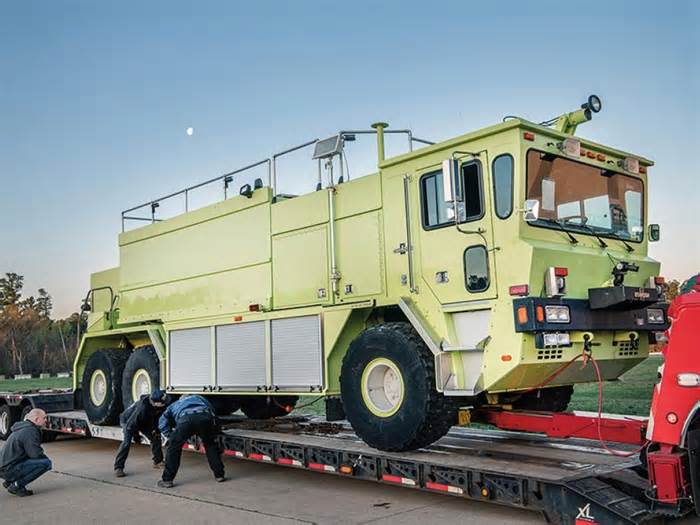Sections
The tragic story of September 11, 2001 is inextricably tied to aviation, including the heroic efforts of the firefighters from Ronald Reagan Washington National Airport’s fire department. They were among the first to respond to the crash of American Airlines Flight 77, which was hijacked and flown into the Pentagon in Arlington, Virginia.
The National Air and Space Museum recognizes this terrible day and commemorates the firefighters at the national airport with the purchase of Foam 331, the first of two foam trucks that arrived that morning. Rescue trucks that transport foam, known as “rescue trucks. “They are designed to cope with the demanding firefighting situations resulting from aircraft accidents. These trucks use chemical foam to stifle the burning of aviation fuel and are designed to drive over rough terrain near civilian and military airfields. The Boeing 757 that landed at the building on Sept. 11 had only about 20 tons of fuel on board. The Pentagon’s foam truck had been badly damaged, so trucks at the national airport were the primary means of fighting the fire in the first hours after the attack.
As members of the aerial rescue and firefighting community, those first responders had significant experience handling high-casualty events. The Defense Department’s official history of the attack on the Pentagon offers a poignant account of what they faced: “In early Minutes, while some firefighters sought to act near the site, others installed firefighting apparatus as temporarily as possible, with the immediate need to quell the external fires caused by the aviation fuel that saturated everything in its path. It had generated a huge fireball that exploded outwards, upwards and above the building. The first search and rescue missions were incredibly dangerous. Firefighters did not know how far the fire had spread or how much the structural integrity of the building was compromised.
Foam 331’s journey to the Museum began in 1997, when it was purchased by the Metropolitan Washington Airports Authority. It was stationed at National Airport and then later at Washington Dulles International Airport before being sold in 2016 to a Canadian airport services operator, which planned to use it for parts. By 2019, the truck had been sold back to the manufacturer, Oshkosh Corporation, for scrap. Bill Stewart, a retired firefighter and training captain at National Airport, went looking for the truck as a way of honoring 9/11 first responders. After the truck was located, Stewart and the Museum worked with Oshkosh to have it prepped for display.
Visitors to the Museum can see Foam 331 at the Steven F. Udvar-Hazy Center in Chantilly, Virginia.
This article is from the Fall issue of Air & Space Quarterly, the National Air and Space Museum’s signature magazine that explores topics in aviation and space, from the earliest moments of flight to today. Explore the full issue.
Would you like to get ad-free print copies of Air?

